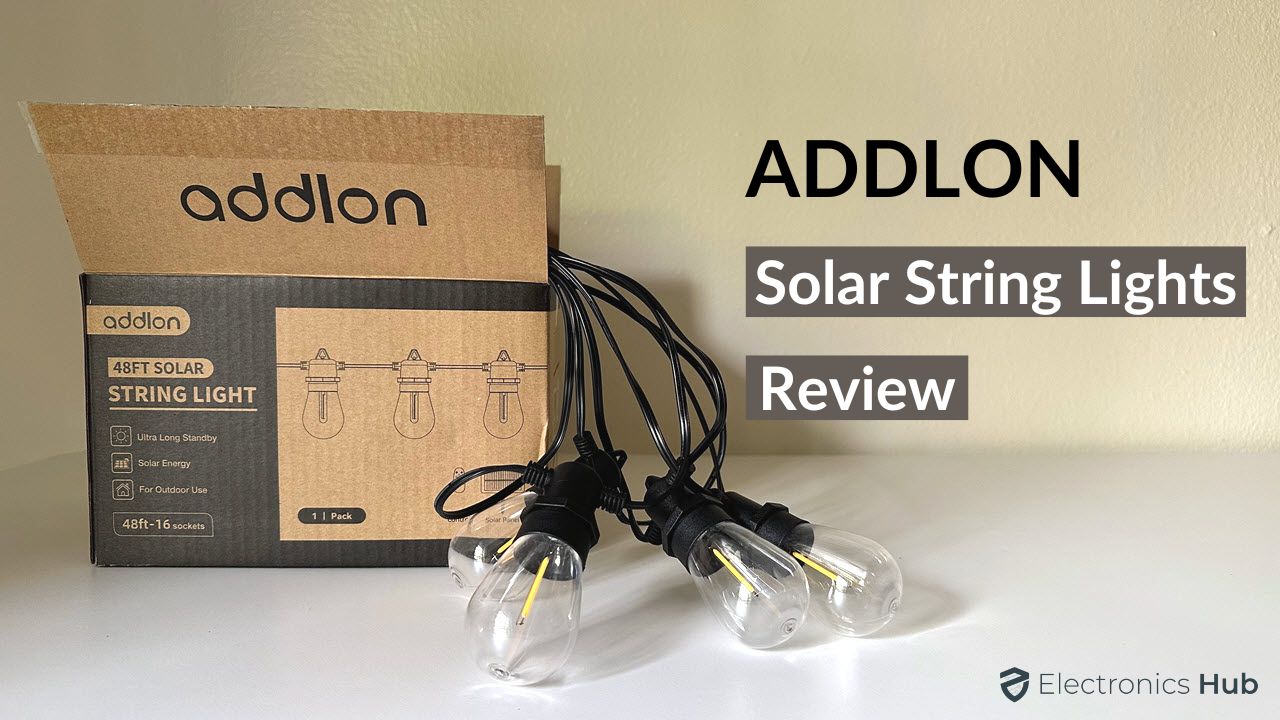Addlon 54ft (48+6) Solar String Lights Review

The actual bulbs are S14 LED Bulbs. At first glance, we though the bulbs are made up of glass. But thankfully, they are not. They are made up of very rugged and shatterproof plastic. Internally, there is a single line of LED in the bulb.
On the front of the solar panel module, we have, well, the solar panel. On the back, there are a couple of buttons with labels “ON/OFF” and “MODE”. Still on the back side, there is a mounting point where you can screw the wall holder part. Just beside the two buttons, there is a flap covering the USB-C port.
There are 10 buttons on the handy remote control. On top, we have the main power on and off buttons. Just below that, we have the mode selection button. Using this button, you can set the mode between breathing, flashing, and constant light. Then we have the three brightness selection buttons: Bright, Super Bright, and Soft.
Finally, we have four timer-related buttons using which you can set the off timer. The available timings are: 2H, 4H, 6H, and 8H.
Installing the Addlon Solar String Lights is very easy. As all the LED Bulbs are already attached in a string format, just unwrap the string and place/fix/attach them where ever you like. Each socket has a small hole on the top so that you can tie them down using cable ties. In our case, we wrapped the string lights along a stair case.
Before proceeding with installation, make sure that all the LED Bulbs are properly screwed into their sockets. In our case, some of the bulbs were partially screwed. Even the manufacturer suggest to tightly screw all the bulbs in the string.
Choose a place to mount the solar panel module. You can either fix it on a wall or insert it in the ground in your garden. In our case, we chose to insert the solar panel module in the ground at the bottom of the stair case. This is the place where we get maximum sun light during day time.
We first drained the solar panel module completely by running the string lights in full brightness mode. It took almost 5 hours to fully drain the module. After that, we recharged the module using a regular USB adapter with USB-C Cable. It took slightly over 4 hours to fully charge the 5,000mAh battery in the module from in the USB Mode.
After this, we set the brightness to “Soft” and left the lights on to see how long does the solar panel module last. Even though the manufacturer claims more than 20 hours of backup when the brightness is set to soft, we got just over 18 hours. While this is not a complete setback, we wish the battery lasted the full 20 hours as claimed by the manufacturer.
Credit : Source Post






